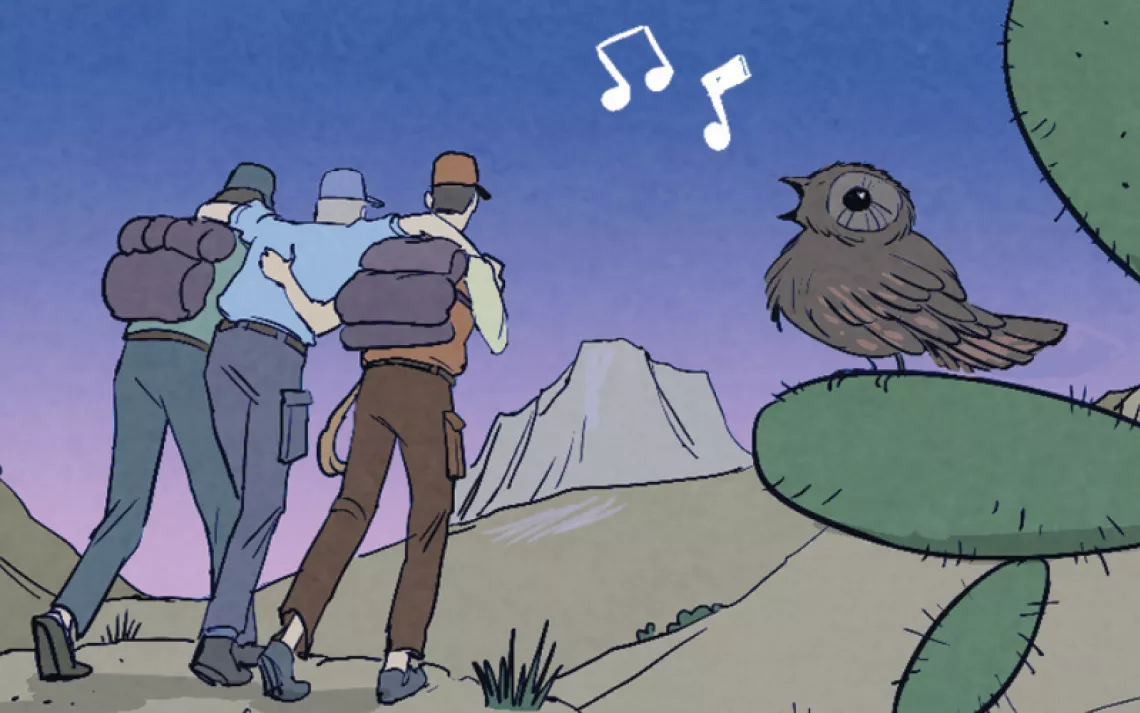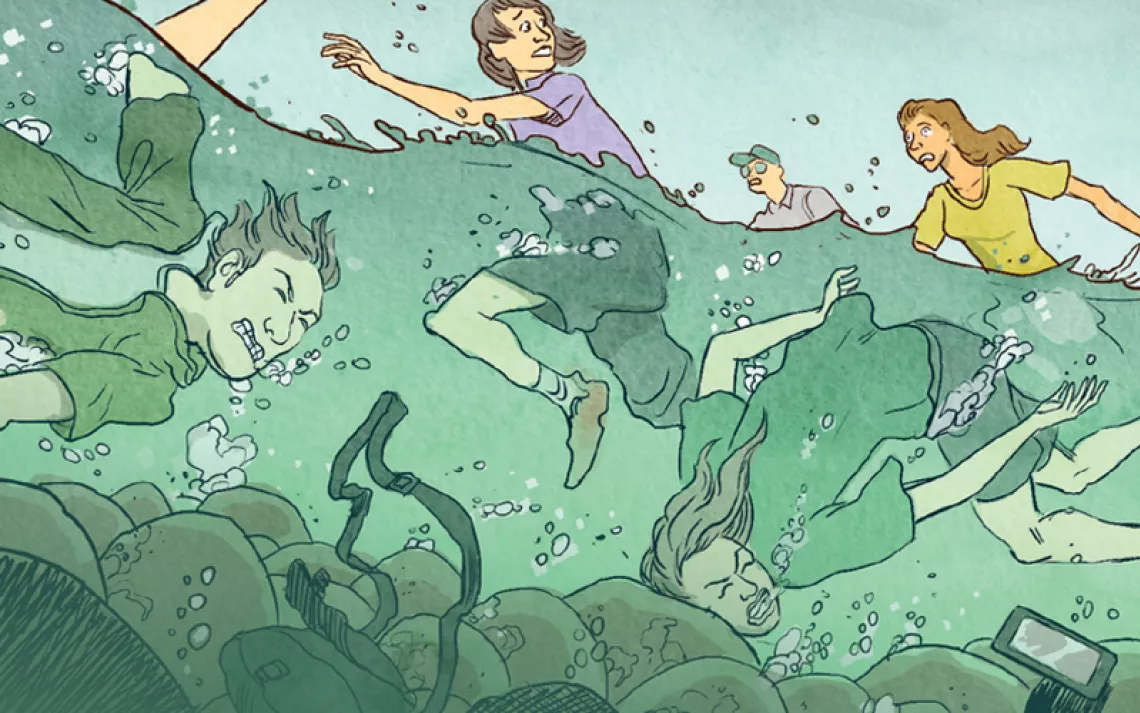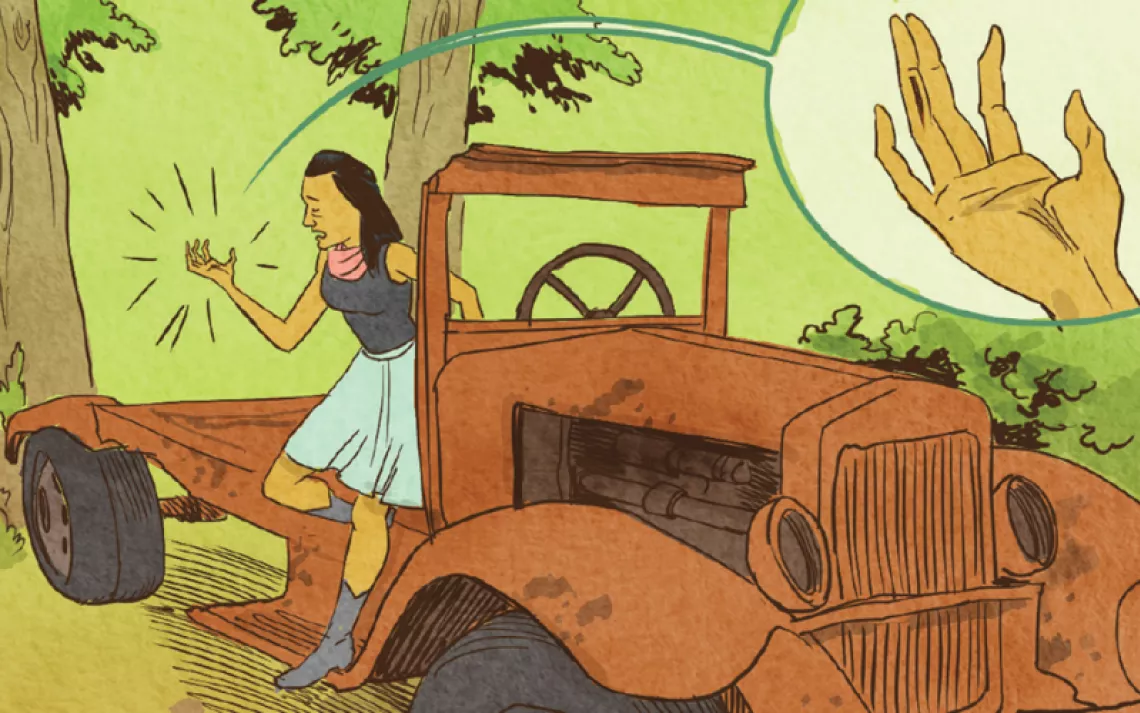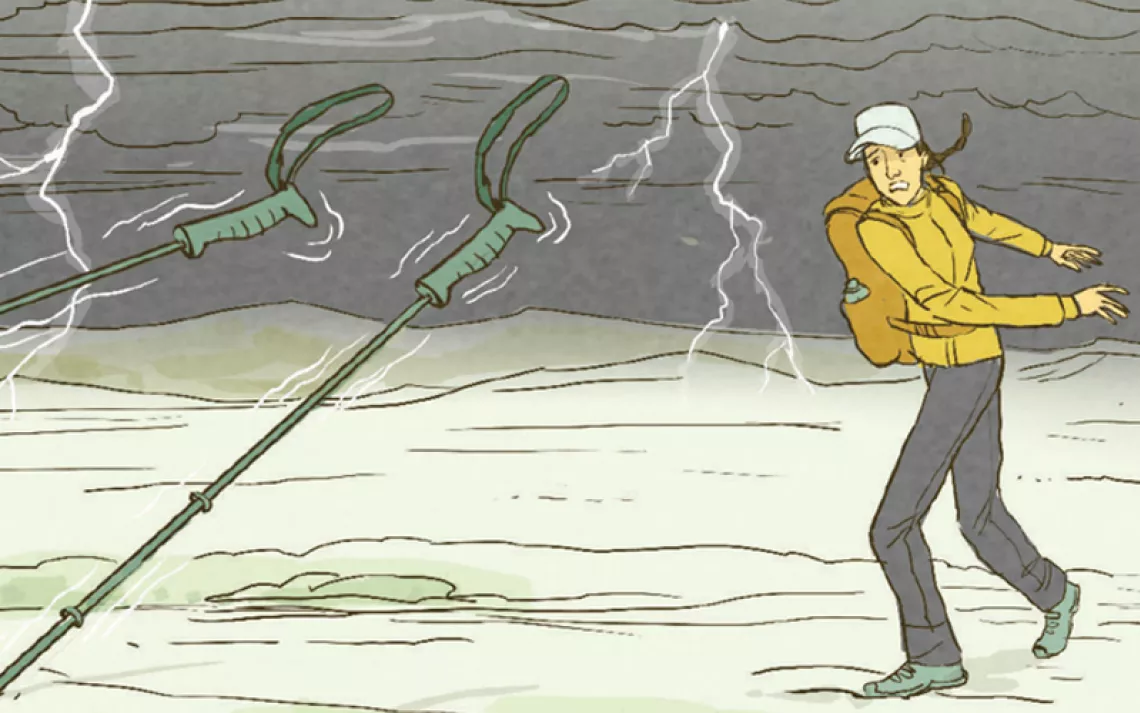How Not to Do a Fireman's Belay
Falling rocks cut my knee to the bone—and I had 20 rappels to the bottom
Climbers move rapidly down cliffs by rappelling. The third pitch in Death Valley National Park's Abysmal Canyon involves an overhang and a sickening swing into empty space. My friend Dawn was uneasy, so I offered a fireman's belay as a backup—but I stood in the wrong place.
Ask the Expert
Ron Hudson is chair of the Sierra Club’s Mountaineering Oversight Committee.
“The preferred way to lower a person in trouble is from the top, using a separate rope. A fireman’s belayer needs to stand far enough away from the fall line to be safe from falling rocks. And of course canyoneers should always wear a helmet.”
 The Magazine of The Sierra Club
The Magazine of The Sierra Club







